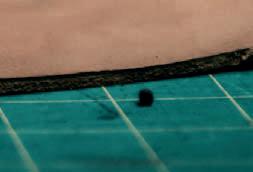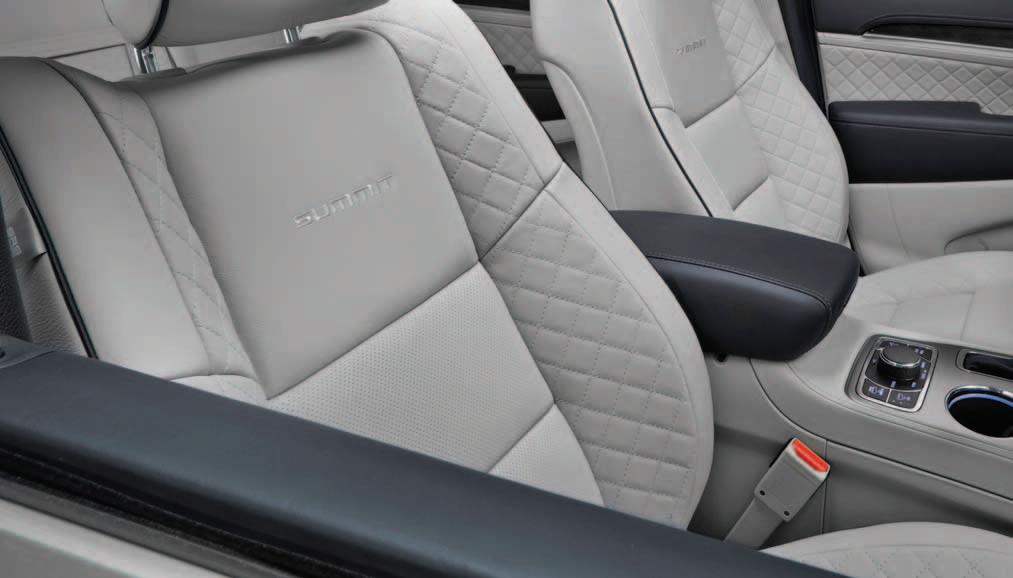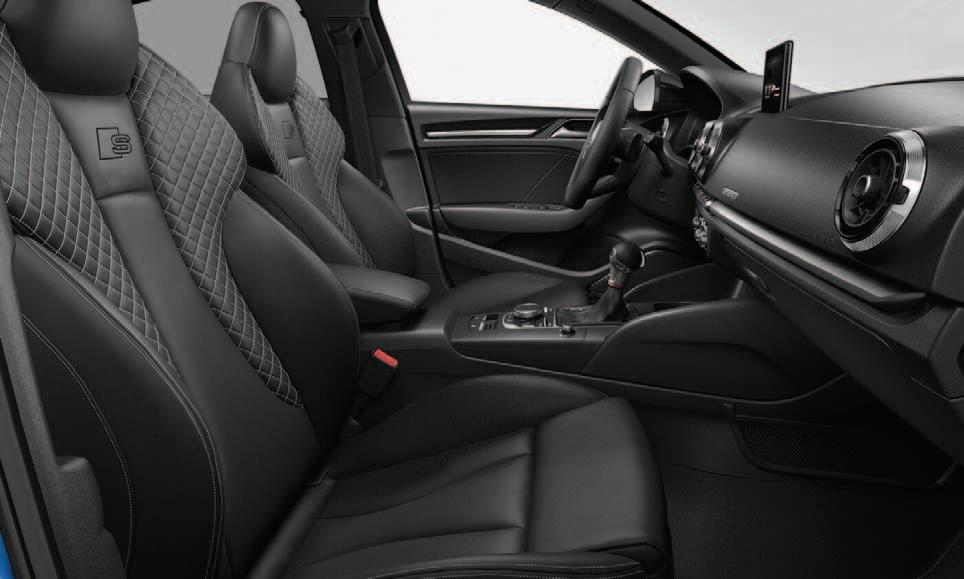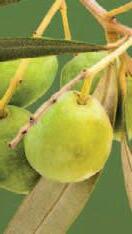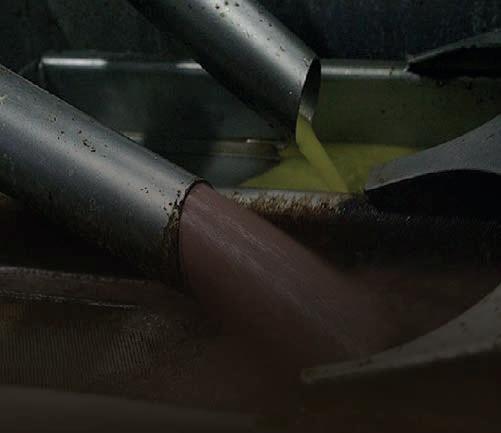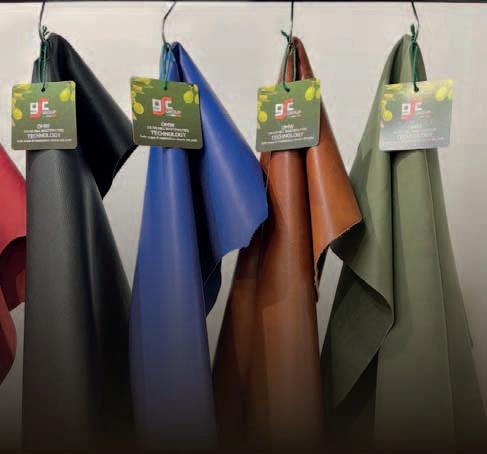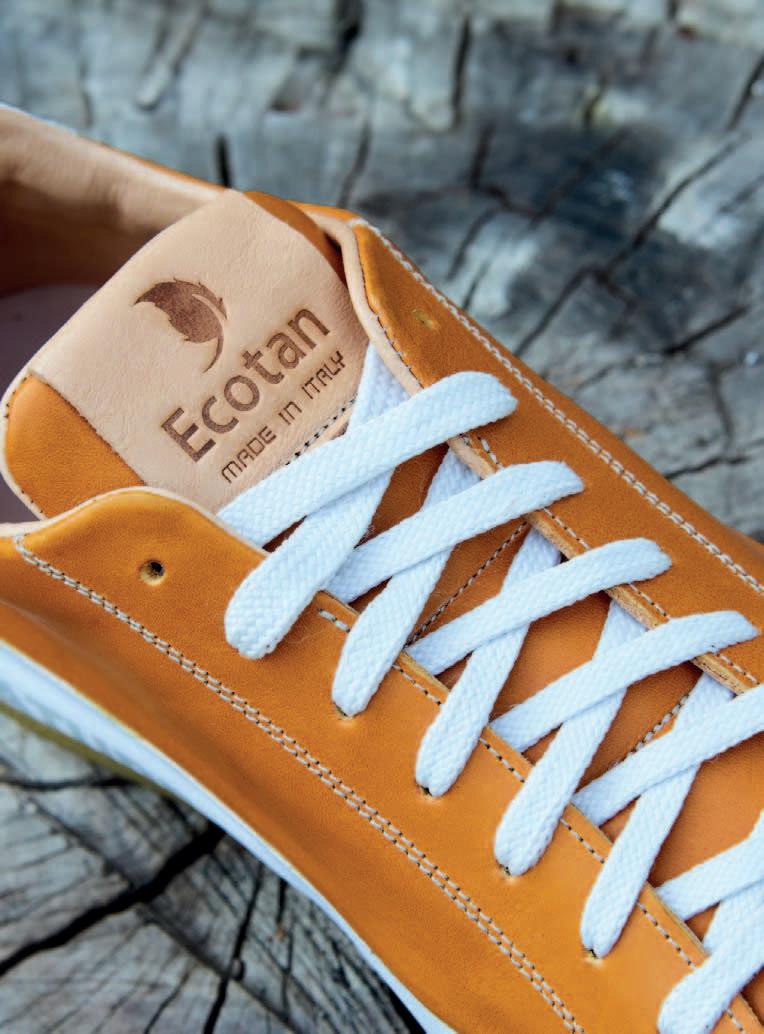Leatherbiz Market Intelligence executive summary:
• It is not yet clear what impact tariff changes will have on the global leather industry
• This makes planning decisions extremely difficult for many producers
• Another important aspect is the impact of customs duties on the price of end products
• Leather clothing once again played a major role at the recent fashion shows in New York
• Adidas is continuing on its path with leather, with further models and an expansion into other product areas
• There is a high probability that there will be more impressions worth reporting Lineapelle (February 25-27)
• It will be exciting to how the European leather industry is doing at the moment and what developments we can expect in the rest of 2025.
MARKET INTELLIGENCE
We are in the final phase of what is traditionally the busiest production season. Fundamental decisions about leather as a material, in the planning of consumer goods producers and in retail, have long been made for the current season and there is still some way to go before the decisions for the next seasons are made.
The global economy, including the leather industry, is so closely interlinked today that the immediate and direct influences are not so easy to analyse. If you look at the automotive industry alone, which includes seats and interiors, some products cross borders in the course of production and may be subject to customs duties in the future. For other products, the situation is somewhat simpler because they are directly and immediately affected by customs duties. However, it is not yet known exactly which tariffs will be levied, for what, when and in what form.
This makes planning and strategic location decisions extremely difficult for many producers who are involved in longer transport and production chains. If you are unlucky, you may even be affected by customs duties several times and the calculation makes the question of the location of a production facility of fundamental importance at the moment. But before possible effects become apparent, you first need to be clear about the level of customs duties and their effect on location costs. Not every tariff immediately makes a location unattractive, apart from the fact that relocation is not possible in the short term.
Another important aspect is, of course, the impact of customs duties on the price
development of end products or, to put it simply, on inflation. While the impact on the product, made of leather, may not be of crucial importance, the issue of inflation does play a major role. Let us not forget that most products made from leather are not necessarily part of basic consumption. This means that the demand for leather products is determined more by disposable income than by the price.
Of course, basic consumer behaviour also plays a decisive role. You can twist and turn it however you like, but with very few exceptions, luxury leather products have lost a great deal of their appeal to consumers. The impression of glamour that leather products used to create for consumers, particularly in Asia, has lost some of its magic at the moment. As much as luxury goods manufacturers would like to convince us otherwise, proof of a trend reversal in the second half of 2025 has yet to be provided. At the moment, the sales figures of most suppliers speak for themselves. Only very few brands, but Hermès in particular is a good example, have managed to retain their image among ultra-rich consumers and maintain their market position with uniqueness and quality.
If you are honest, and you look at many other luxury leathergoods, then in all honesty you have to say that in the course of their success and growth, they have failed to work consistently on quality. As unfortunate as it is, a lot of the brands have relied on their name and logo and against all protestations have failed to take care of the quality of the materials and the quality of the finish. Although this has been a slow trend, it has been absolutely noticeable to experts who are
TUESDAY, FEBRUARY 18 2025
able to judge these things.
Of course, this quickly made us a victim of those who like to pounce on such developments and trends. There are now almost as many influencers who decorate themselves with brand names as there are people who have made it their business to dissect branded products and scrutinise their quality and workmanship. None of those involved can really claim to be the ultimate authority on these issues raised, but of course one thing that cannot be argued away is that if it is easy to point out inadequate workmanship or easily expose the materials as sub-standard, exclusivity can very quickly be called into question. If it can then be proven that production does not take place in the company’s own factories with great craftsmanship, but in possibly less qualified subcontractors, then one can only hope that this does not register too much with the public.
We have all seen how quickly big brands can become big losers if the important parameters that lead to luxury and exclusivity can no longer be defended. The brand diversity of the leading luxury conglomerates that has emerged in recent years with the strong growth is now facing a big challenge and it will probably take a lot of energy if all brands want to defend their positions. Unfortunately, a lot of this is also directly related to leather as a material, which plays a very special role in this sector.
What else can be said about the last two weeks in the leather pipeline? In the absence of any major news from ongoing activities, we took a look at the media.
We noticed two things in particular. Firstly, that leather clothing once again played a major role at the fashion shows in New York. At the same time, anyone who watched the Super Bowl could also admire many leather jackets during the half-time show. Considering that the TV adverts for this event are among the most expensive you can book, you have to be thrilled and the only question is whether the industry will be able to make the most of this opportunity. Once again, doubts are justified.
We also noticed that adidas is continuing unwaveringly on its path with leather. Further models and also an expansion into other product areas. Leather as a material is currently being rolled out vertically and horizontally. Animal rights organisations complained about the use of ostrich leather in adidas products, but were quickly told that ostrich leather is not used at all. It was a surprise that it took so long for these protests to emerge. It was also very telling that well
funded organisations that claim to care about animal protection and welfare, and therefore reject leather, should have so little knowledge of the product. Adidas handled the issue confidently and competently.
The demand for splits from all sectors remains stable at the moment. The lower production of leather is reducing supply and therefore the by-product of leather production can be marketed relatively well. This is not having a major impact on prices at the moment because, firstly, this market is very price-sensitive and, secondly, the extremely low prices for hides leave little room for major price increases for this by-product.
There is also still no major news regarding sheepskins. The potential for leather clothing remains high, but as long as it does not really find its way back into the major brands and retailers, the impact will remain manageable. It is worth noting that prices for lightweight lambskins with fine wool are continuing to strengthen. Demand clearly exceeds supply at
the moment. As these skins are mainly used in the clothing sector and to some extent also in high-quality shoe linings, demand must have improved significantly and this means that there will definitely be orders for this type of material on the market for the next winter season. Let us hope that this also extends to other sectors.
The next issue of Market Intelligence will be published immediately after the Lineapelle fair in Milan (February 25-27). There is a high probability that there will be more impressions worth reporting afterwards. It will be exciting to see if there are any new fashion developments. It will be exciting to hear whether there will actually be more leather clothing again. And it will be particularly exciting to see how the European leather industry is doing at the moment and what developments we can expect in the rest of 2025. We will know more in a fortnight’s time
US PERSPECTIVE
Sales of cured cattle hides for the period ending February 6 were 262,800 pieces. The figure for exports of wet blue was 179,900 pieces.
The most recent reports on hide prices showed butt-branded steers weighing 66-68 pounds at $27, Colorado branded steers, weighing 64-66 pounds, still at $20.50 per piece, with heavy Texas steers weighing 60-62 still at $16.50 per piece.
Cow hide prices remained unchanged at $13.50 for northern dairy cows, $13 for southwest dairy cows, $7 for northern branded cows and $6.50 for south-west branded cows, with weights of 50-52 pounds in each case.
The source of all these figures is the US Department of Agriculture. Please note that the prices quoted represent ‘ballpark’ figures.
Cattle markets USA
Frigid temperatures crashed into the plains with some snow and wind. This week’s focus will be retailers’ reaction to two weeks of dramatically reduced slaughter volumes. Live prices have fallen $10 and the composite has matched the decline, leaving processors in the same place for margins. Packer focus will be on lowering input cost while raising prices.
Excellent –Bisphenol optimized syntans to achieve high leather quality
The Trump administration changed tack on bird flu and approved a vaccine from Zoetis to control the virus rather than mass culling of infected flocks. It is unclear how the plans will affect beef cattle, although dairy cattle are included in the vaccination plans.
Trading concluded last week with live trade in both the north and south mainly at $203, with some weakening at week’s end to $202 in Kansas. Dressed sales ranged from $320 to $322. All prices were $3-$4 lower.
The cut-out turned lower despite slaughter reductions. The difficulty has been aligning the cost from the cash market for live cattle to a new price level for the retailer. Retailers never seem sensitive to the plight of the processors. Packers will be managing the slaughter volumes, attempting to stem the flow of red ink and this week’s small volume will likely be followed by another small kill next week. The choice-select spread has narrowed, as expected.
Corn is trading north and south of $5, waiting for more definition of the upcoming year’s crop and implications of government trade policies. Corn basis levels in Guymon, Oklahoma, are at $0.90, basis the March contract.
GERMAN PERSPECTIVE
This week: Reporting on the market is not really much fun at the moment. How could it be, because on the one hand activity is very low and on the other hand we are currently excluded from many export markets owing to foot and mouth disease. Fortunately, not from all of them, because for those countries that do not require government-approved certificates,
necessary adjustments
made with the relevant import authorities. The problem of foot-and-mouth disease is becoming increasingly unclear at the moment. Since the one case in a buffalo herd at the beginning of January, there have been no further infections. On the one hand, this is extremely pleasing, as the spread of the disease would have had catastrophic consequences. But on the other hand it is also somewhat strange.
The probability that there have been no further infections from wild animals is relatively low. With the close monitoring and multiple tests that have been carried out, it is also relatively unlikely that further cases could have gone undetected. This of course raises the question of whether it is possible that the virus detected was not foot-and-mouth at all. We will never know and therefore we can only hope that Germany can soon be considered disease-free again in accordance with animal health regulations. We will have to wait and see whether this will be immediately accepted by all countries. In the meantime, the goods will find their way if they want to.
utilise their capacities, slaughterhouses can currently only buy sufficient livestock by offering high prices. The prices in the food retail trade hardly reflect this development so far.
What we expect: It is really difficult at the moment to assume that the fundamental paralysis of the market could change much. However, it is also true that the longer nothing changes, the higher the probability is of a change and possibly also of a surprising
and significant change. We believe that this has been overdue for some time, but so far nothing has materialised and it is possible that there will not be a reaction until after the trade fair in Milan.
The United Nations has identified forest conservation as an important component in the battle to bring carbon emissions down. Contrary to the perceptions of many, livestock farmers are convinced they can contribute too. And they have the figures to prove it. Actual Slaughter Under Federal Inspection
LONG READ
Leather and the Circular Economy: Thought Leadership
To net-zero and beyond
The market at the abattoirs is unmoved by all these developments, and anyone expecting price reductions must be disappointed at the moment. We are slowly moving towards the Lineapelle trade fair in Milan (February 25-27), which will give an impression of the situation in the leather industry, as always, and an indicator of the mood.
All the news that can be gathered from Europe at the moment does not point to any real improvement in orders in the leather industry. It gives the impression that people are actually more concerned with political developments at the moment than looking ahead with confidence to business developments in the coming months. Too much is and remains unclear; the tariff war is still one of the smaller problems at the moment.
With regard to sales this week, we can only report that very little happened overall, but whatever had to be bought and sold was transacted at unchanged price levels. The extent to which these transactions are representative is left to the view and opinion of each individual.
The kill: The published slaughter figures for 2024 for Germany were almost at the same level as 2023 at 3 million head of cattle. Predicted declines did not materialise and the start of this year did not show any change in the trend. Prices for live cattle are continuing to rise, the demand for meat is described as good, especially from export markets, and the supply of live cattle as too low. In order to
LATEST HIDE AND SKIN PRICES FROM GERMANY
On publishing its 2024 Emissions Gap Report in late October, the United Nations (UN) said “climate crunch time” had arrived. The UN has been publishing this report annually since 2016. Its aim is to track the gap between where global emissions are heading and where they ought to be if humanity is to limit global warming in line with the Paris Agreement. The agreement, also from 2016, binds its 195 signatories to work to keep the rise in the global surface temperature to “well below” 2°C, compared to pre-industrial levels. Signatories also agreed to pursue the objective of keeping global warming to 1.5°C above pre-industrial levels.
When the 2024 report appeared, it showed that there was a new record for global greenhouse gas emissions in 2023 with a total of 57.1 gigatonnes of carbon dioxideequivalent (CO2e). The reaction of UN secretary-general, Antonio Guterres, was to say: “We are teetering on a planetary tightrope. Either leaders bridge the emissions gap or we plunge headlong into climate disaster, with the poorest and most vulnerable suffering the most.” He said governments urgently had to show “a surge in ambition” to achieve emissions reductions that are substantial enough to put the Paris targets back on track.
For 1.5 or “well below 2” degrees Celsius to become achievable again, the UN said nations, collectively, must commit to cutting annual greenhouse gas emissions by 42% by 2030 and by 57% by 2035. Without these “dramatic cuts”, the report warns, the world could face “an inevitable and catastrophic” temperature rise of 3.1°C by the end of this century.
Sources of hope
In spite of the tone of its headline message, the UN said in its presentation of these figures that there is still hope. Boosting solar photovoltaic and wind energy usage could contribute 27% of the required reduction for 2030, and 38% of the reduction needed by
2035. Forest conservation could provide an additional 20% of the necessary reductions in both years. Other effective strategies the UN suggests include enhancing energy efficiency, electrifying “various sectors” and transitioning from fossil fuels in buildings, transport and industry. To make any of this happen, though, there will need to be “unprecedented international cooperation”.
These suggested measures focus on energy because, according to the UN’s figures, energy contributed 68.7% of total emissions in 2023. It attributed a further 4% to waste, and just over 9% to industrial processes. Land-use, land-use change and forestry have a share of 7%. It attributes the remaining 11% of emissions to agriculture, with livestock’s share standing at 6% of the total.
Part of the solution
It is clear from what it has said that the UN believes management of forests can become part of the solution. What if livestock farming can do the same? Unrelenting messages that push people to reduce or reject the consumption of animal protein as a way of combatting climate change are common. They form no part of the 2024 Emissions Gap Report, but they have become commonplace in mainstream media’s coverage of this question and are an important part of the content in press releases and reports from campaign groups. A few weeks before the new UN report appeared, Greenpeace Nordics published its own 82-page climate- change update using ‘Pulling the climate emergency brake on big meat and dairy’ as the subtitle. In the days that followed, the organisation celebrated the fact that the document’s appearance had led to “activists from many countries [paying] a visit to some of the world’s biggest meat and dairy giants”.
Professor John Gilliland would not class himself among the “meat giants”, but he is a livestock farmer. His family has run Brook Hall Estate in County Derry in Ireland since 1856. He is a member of the European Union’s Soil Mission Board, a special advisor to the UK’s Agriculture Horticulture Development Board, and honorary professor of practice in agriculture and sustainability at Queen’s University Belfast. But the herd on his farm is small, comprising 20 dairy-cross-beef steers. Nevertheless, he, too, has been on the end of questions about this part of his work from members of the public. At ‘open farm’ events, he says “impressionable young people” have been forthright in their criticism of him for being part of the livestock industry.
His answer is to acknowledge their passion for sustainability, but then to put a question back to them. He explains: “I ask them how much carbon they have responsibility for managing every year. They admit they have no idea. I thank them for their honesty, but then I tell them that they should know their numbers. I know my numbers. On my farm I am responsible for managing 24,405 tonnes of carbon every year, and that’s before I produce an ounce of food for them to eat. And, for this, I ask them to treat me with some
respect because they need me as much as I need them. That disarms the aggression and the passion, and then we can have a good conversation.”
What the numbers say
Where he seeks to take that conversation is to the positive contribution to the fight against climate change that farmers can make. John Gilliland believes that if forest conservation can be a force for good in reducing emissions, livestock farms can be, too. He believes, from knowing his numbers, that Brook Hall Estate is already making a positive impact because the figures tell him that the farm is not only at net-zero, but has gone beyond net-zero.
The farm worked out its numbers by using Agrecalc, an agricultural resource efficiency and greenhouse gas emissions calculator developed in Scotland, and by working with PhD students from the Netherlands and Ireland. It worked out its greenhouse gas
emissions and calculated the amount of carbon in the farm’s soil and in its trees and hedges to be able to estimate carbon sequestration. This gave Professor Gilliland a figure for the farm’s net carbon position. Gross emissions work out at 151 tonnes of CO2e per year. Gross sequestration is 156 tonnes of CO2e per year. Net emissions from Brook Hall Estate are, therefore, minus-4 tonnes of CO2e per year. Tools the farm has used include airborne LiDAR (light detection and ranging) technology to determine the height of the trees on the site, and soil-sampling technology to measure carbon content at depths ofuptoone metre below the ground and to chart changes in carbon levels.
Super soil
Establishing the height of the trees and the canopy area they cover makes it possible, using software, to work out how much carbon the trees hold. Soil analysis at Professor Gilliland’s farm has allowed him to work out

which type of land-use delivers the most carbon sequestration. Converted to CO2e, the soil on the farm captures just under 20,000 tonnes. He thinks it is interesting that, even though he has a large number of trees, including short- rotation willow trees as a renewable energy crop and oak trees that are 250 years old, 80% of the carbon the farm captures is in the soil. He thinks this calculation might come as a surprise to some of the groups that call for farmers to get rid of livestock and plant more trees. Cattle faeces plays a hugely important role in soil health. He has figures to prove this. His land-use is diverse, but he now knows that the areas where his livestock graze are the areas with by far the best concentration of earth-worms and of bacteria and fungi biomass in the soil. He encourages all livestock farmers to work out their own numbers if they can, acknowledging that it will be much harder for some to do so than for others. He calls for help from regulators and from governments to recognise and register the positive
contributions that smaller-scale farmers are making to wider efforts to combat emissions. These could scale up to agricultural enterprises of a bigger size, but he questions whether or not scope-three emissions systems or government greenhouse gas emission inventories are “smart enough” to pick up the changes that farmers like him are achieving already.
Health from the ground up
There are win-wins through which farmers can help accelerate the move to net-zero while remaining viable businesses. But there are also win-lose scenarios and he points out that farmers cannot deliver net-zero without help in making sure the win- wins happen. These include improving the use of genetics in managing herds, reducing the age of slaughter and improving soil pH. Win-lose alternatives include, in the professor’s opinion, the much vaunted option of feed additives as a means of reducing methane from cattle herds. “This is supposed to be a big silver
bullet,” he says. “Everyone is telling me that. But who is going to pay? There is a second big push in Europe for green nitrogen fertiliser. These are things we could do, but at the moment they would mean losing money. That’s why farmers are in no rush to do them.” All of this, of course, is about helping farmers find viable ways of continuing to produce food while achieving and going beyond net-zero. Professor Gilliland’s soil statistics show how important livestock are in this. He says he believes in health from the ground up and that healthy soil makes for healthy societies. Making livestock farms more efficient and more sustainable can help feed people and make the Paris Agreement more achievable.
Champions of Best Practice
by a Life Cycle Assessment (LCA) for leather. This will ensure that hard data and (LCA) ensure hard data and continual improvement in our processes and systems best position us for a future in and systems best position for a future where sustainability is a key driver for commercial decision making. key driver commercial decision making.
This ISP consists of four strands.
• The provision of the most accurate information about leather, sustainability and production.
• The championing of best practice at every point in the supply chain.
• The willingness to address the hard issues our industry faces.
• The sharing of information with members, manufacturers, consumers and the media.
Today we look at best practice.
U.S. Government environmental standards, and those of our supply chain’s animal care, rank among the world’s highest and assure buyers of U.S. hides and leather that they have been produced to exemplary standards in all areas including animal care, ESG and sustainability.
champions of best practice. We accelerate the adoption of new standards and promote them in the U.S. and around the world.
Examples of recent industry developments championed by L&HCA, for example, of speeding the tanning process.
remove chromium (III) for reuse. And evaporation is now being used for the removal of salt while coagulants can be added to the water which bind with waste to leave a sediment which can be safely disposed of.
Best practice does not stop at the border.
We do not just promote this framework domestically. We actively promote it worldwide. The more trusted leather is, from wherever it originates, the better it is for the U.S. leather industry and for the planet.
From trade communications to our global Real Leather. Stay Different. program repositioning leather as the material of choice for tomorrow.
Luxury leathergoods brand Hermès has reported full-year revenues for 2024 of €15.2 billion, an increase of 13% year on year. Its leathergoods and saddlery division achieved revenues of just under €6.5 billion, growth of 16.4%. The ready-to-wear and accessories division, in which the company includes its footwear, glove and belt categories, reported revenues of €4.4 billion, growth of 13.6%.
Commenting on the results, executive chairman, Axel Dumas, said: “In 2024, in an uncertain economic and geopolitical context, the solid performance of the results attests to the strength of the Hermès model and the agility of our teams, whom I thank warmly. The company is staying the course, attached more than ever to its fundamental values of quality, creativity and savoir-faire.”
Steve Madden acquires Kurt Geiger brand
USbased brand Steve Madden has announced it will acquire UK-based fashion brand Kurt Geiger for approximately £289 million ($363 million) in cash.
The acquisition is expected to be finalised in the second quarter of 2025, subject to regulatory approvals and other standard conditions. Steve Madden’s board has unanimously approved the transaction, which will be funded through a mix of debt financing and cash reserves.
Founded in 1963 on London’s Bond Street, Kurt Geiger has grown into a global brand, operating around 70 stores worldwide and managing concessions in major department stores, including Harrods and Selfridges. Its brand portfolio includes Kurt Geiger London, KG Kurt Geiger, and Carvela. For the fiscal year ending February 1, 2025, Kurt Geiger’s estimated revenue was £400 million ($503 million).
Steve Madden CEO Edward Rosenfeld praised Kurt Geiger’s brand identity and market positioning,
its
with Steve Madden’s strategic goals in expanding international markets, accessories, and direct-to-consumer sales channels.
Major Turkish group ends inhouse leather production
On of Turkey’s best known tanning groups, Sepiciler, has taken the decision to stop producing its own leather. Instead, the group will source leather from partner tanneries to continue to supply customers.
A producer of vegetable-tanned, chrometanned and soling leather until now, Sepiciler had operated tanneries since 1930. It won the Tannery of the Year award for Europe in 2013.
In the last decade, it established its own solar energy plant close to its facility in Torbali, near Izmir. It also set up a new company to increase business in the US market and moved its wet-end processing to a new facility at the leather cluster in Bursa.
Sepiciler was also one of the first leather manufacturers to embrace Silvateam’s Ecotan range of technologies and Biocircular concept.
Chief executive of the family-run group, Mehmet Sepici, told Leatherbiz: “We are exiting production but we will continue to serve our customers as a leather supplier, using our technical know-how and experience to select the best leathers for them from carefully selected tanneries worldwide.”
He said the family’s decision had been unanimous, but also tough and painful. He added: “Being a tanner is our family tradition, and has been for generations.”
Semi-final line-up confirmed for LVMH Young Fashion Designers awards
Luxury group LVMH has announced the 20 brands that have made it to the semi-finals of the 2025 edition of its Young Fashion Designers prizes.
It said it had received 2,300 applications this year and has selected 20 shortlisted entries from these. Those shortlisted will present collections in Paris on March 5 and 6. The collections will be available for the general public to view online and viewers will have until March 9 to vote for their favourites.
These votes, along with the adjudication of a panel of fashion experts, will give eight entries a place in this year’s final and the chance to win high levels of funding, plus mentoring from LVMH craftspeople and brands.
Leather museum relocation on hold amid public backlash
Plans to relocate Walsall Leather Museum from its current site have been abandoned after strong public opposition. Councillor Garry Perry, leader of Walsall Council, confirmed the decision recently, following widespread backlash and a budget consultation.
The proposal, part of efforts to address a £29 million budget shortfall, aimed to secure the museum’s long-term future by moving it to a town centre location. However, it was met with significant resistance, with more than 6,000 people signing a petition against
the move and Walsall & Bloxwich MP Valerie Vaz joining a public protest march.
Councillor Perry acknowledged the museum’s importance to the town’s identity and its historic leather industry. He stated that while the relocation was intended to broaden the museum’s appeal, the council recognised the strength of public opposition and would not proceed with the plan.
The council will now engage with the community and industry representatives to explore alternative options for the museum’s future.
High-end shoe brand sets up second-hand platform
Handmade
shoe producer La Botte Gardiane has launched a platform for consumers to buy pre-owned pairs of its footwear.
The company, based in the south of France, said it was proud to launch the initiative as part of its commitment to durability and respect for the environment.
QUAKER COLOR A STEP AHEAD IN AUTOMOTIVE FINISHING
“Long-lasting products are not an abstract idea for us,” the company said. “It is something tangible. We invite our customers to consider our second-hand platform as a way of taking part in conscious and sustainable fashion by giving products a second life.”
Electric car plans continue at Bentley with new centre of excellence
Automotive company Bentley Motors has opened a new centre of excellence at its headquarters in Crewe in north-west England. It said the new facility will be pivotal to its preparations for launching the first batterypowered electric vehicle, which it hopes to do next year.
The new facility houses a “production proving ground” and mini assembly line and will help Bentley carry out intensive tests on the new vehicle, which it describes as “the world’s first urban luxury sports utility vehicle”. It also includes a technical centre for future
Supplying
Quaker Color is a division of McAdoo & Allen, with roots in the leather industry for over a century
materials testing, high-precision dimensional measurement, vehicle analysis and reliability.
Commenting on the developments, head of manufacturing at Bentley, Andreas Lehe, said the new centre represented “a significant step forward in transforming our historic Crewe site into a world-leading hub for sustainable luxury automotive production”.
Brands miss out if they fail to repair, white paper says Specialist repair-focused software company
Circulo has said in a new white paper that there is “compelling evidence” to show that brands should invest in repair services.
Founded in 2024 by the people behind former specialist London-based repairs service provider The Restory, Circulo works as a software as a service (SaaS) solution. Its aim is to enable brands, retailers, repair providers, and repair-focused start-ups “to build and manage repair businesses in whatever way meets their goals”.
In the new white paper, ‘Repair as a sustainability cornerstone’, Circulo quoted
recent research from professional services firm Deloitte. The first 2024 ‘Sustainable Consumer’ report found that 75% of consumers would consider using repair services, and that 56% had repaired items instead of replacing them in the past year.
Reacting to this, Circulo said: “When brands don’t offer repair services, customers often seek independent repair options, resulting in missed opportunities to deepen emotional connections, enhance loyalty, and capture valuable first-party customer, product and repair data.”
It said growing consumer acceptance of repair presents a significant opportunity for businesses to enhance customer relationships while contributing to sustainability goals, “but only if brands actively participate in the repair journey”.
Revenue decline of 12% confirms
‘difficult year’ for Kering
Full-year results for 2024 show revenues of € 17.2 billion for luxury group Kering, down by 12% compared to the previous year.
Chief executive, François-Henri Pinault, said he was confident changes the group made in the course of “a difficult year” had now brought Kering “to a point of stabilisation”. He said that, from this position, the group would “gradually resume our growth trajectory”.
Revenues at the group’s biggest brand, Gucci, were €7.7 billion, down by 23% year on year. Kering announced the immediate departure of Gucci’s creative director, Sabato De Sarno, on February 6.
The group said on confirming the full-year results that the performance of new leathergoods lines at the brand, as well as of “iconic Gucci lines such as the Jackie handbag and its new interpretations” had been “highly encouraging”.
At Yves Saint Laurent, revenues were €2.9 billion, a decline of 9% year on year. Again, Kering said new leathergoods products and reinterpretations of Yves Saint Laurent’s “iconic handbags” had been “very well received”.
There was positive news from Bottega Veneta, where revenues reached €1.7 billion, an increase of 4%. The brand’s leathergoods offer “remains highly successful”, Kering said, underscoring “the immense desirability of Bottega Veneta”.
IULTCS issues call for papers
The International Union of Leather Technologists and Chemists Societies (IULTCS) has opened its call for abstracts for the XXXVIII IULTCS Congress, scheduled to take place in Lyon, France, from September 8 to 11, 2025.
Researchers and industry professionals are invited to submit abstracts on topics including leather science, tanning innovations, sustainability, biotechnology, and nanotechnology. The deadline for submissions is April 15, 2025.
The congress aims to bring together experts from around the world to discuss advancements and challenges in the leather industry. Participants will have the opportunity to present their work, exchange knowledge, and contribute to the sector’s development.
For more information and submission guidelines, prospective speakers and attendees are encouraged to visit the official congress website.
PV seeks to explore ‘two key forces’ for leather
Atotal of 77 companies and organisations will take part in the leather segment of the latest edition of Première Vision Paris (February 11-13).
Manufacturers from India, Morocco, Cambodia, Tunisia, Pakistan and China will be present, alongside representatives of France, Italy, Spain, Portugal, Turkey and Brazil.
In the build-up to the exhibition, the organisers said: “The leather industry continues to undergo a transformation, driven by two key forces. On the one hand, there is a push for sustainability and circularity. On the other, there is a thirst for creative innovation.”
They said that one area of interest to have
emerged from this is a view that production offcuts can be “a precious resource, opening the way to exceptional creations”.
Italians to offer supply-chain insight to Fashion Task Force
Aconsortium of Italian fashion-focused small and medium sized enterprises (SME) has joined the Fashion Task Force, a side group of the Sustainable Markets Initiative founded by King Charles III in 2020.
HModa consists of 18 manufacturers supplying to luxury brands, including Alex&Co (leather garments), GAB (leathergoods), Valmor, Dema and Alinea (footwear), Fustellificio Toscano (accessories for leather cutting) and Taglionetto and Emmetierre (small leathergoods).
Claudio Rovere, founder of HModa Group, said: "We are extremely proud to be the first industrial group to join the Fashion Task Force led by Federico Marchetti with the support of His Majesty King Charles III. We are excited to actively contribute to the efforts towards a sustainable future, promoting responsible practices and working together to achieve the goals for a sustainable development in our industry."
Federico Marchetti, chair of the Fashion Task Force, stated: “Claudio and his team will contribute to our goals by bringing a valuable inside-out perspective on the supply chain.”
Key areas of focus for the Task Force include regenerative agriculture projects, Digital Product Passport and traceability. Other members include Prada, Chloé and Giorgio Armani.
Maje launches upcycled handbag capsule
French fashion brand Maje is expanding its sustainability efforts with a new capsule handbag collection made from upcycled leather. In collaboration with Adapta, a French start-up specialising in deadstock leather, the SMCP-owned label has reimagined three of its signature fringed designs—the Miss M, M Bag, and Mini M Bag.
Produced in Italy in a limited run of 100 pieces per style, the collection will be available from mid-March on Maje’s ecommerce platforms in Europe and the U.S., as well as select boutiques. Prices will range from €275 to €335.
Founded in 1998 by Judith Milgrom, Maje operates 640 stores worldwide and reported € 462.5 million in revenue in 2023, maintaining stable sales compared to the previous year.
Marc
Smit
to
deliver
ALCA John Arthur Wilson Memorial Lecture
The American Leather Chemists Association (ALCA) has announced CEO of Royal Smit & Zoon, Marc Smit, as the presenter of the 64th John Arthur Wilson Memorial Lecture at the 119th ALCA Annual Convention.
The lecture will take place on Wednesday, May 14 at 9:00 am, during the convention at Hershey Lodge in Hershey, Pennsylvania, from May 13-16.
Marc Smit, a seventh-generation leader of Royal Smit & Zoon, has overseen the company’s focus on sustainable practices and innovation in leather chemical manufacturing.
The annual convention provides a platform for professionals in the leather industry to discuss advancements and developments in leather chemistry.
Clarks celebrates 200 years with new documentary British footwear brand Clarks is marking its 200th anniversary with From Somerset to the World, a documentary tracing its journey from a small family business in 1825 to a global footwear icon.
Directed by Set Free Richardson and narrated by Yasiin Bey, the film explores Clarks’ cultural impact, from its deep roots in Jamaica and its prominence in hip-hop’s golden era to its enduring influence in Japan and beyond.
Featuring insights from Liam Gallagher, Martine Rose, Raekwon, and Terry Zhu, the documentary highlights Clarks’ timeless designs, such as the Desert Boot and Wallabee, and its lasting presence in fashion and music across generations.
Upheaval at Gucci
Luxury group Kering has announced that its biggest brand, Gucci, has cut its ties to creative director, Sabato De Sarno, who took up the role in January 2023.
It appears this change is with immediate effect because Kering said Gucci’s autumnwinter 2025-2026 fashion show in Milan will go ahead as planned on February 25, but will now be “presented by the Gucci design studio”.
It has no immediate replacement lined up; the group said it would announce a new “artistic direction” for Gucci in due course.
On making the announcement, chief executive of the brand, Stefano Cantino, expressed “deep gratitude” to Sabato De Sarno for his “passion and dedication”, adding that the designer’s commitment had been “a homage to “Gucci’s craftsmanship and heritage”.
Kering will publish its results for 2024 on February 11.
SLTC conference to take place in Scotland
Theannual Society of Leather Technologists and Chemists (SLTC) conference and dinner dance will take place in Glasgow on April 25-26, 2025.
The programme includes a guided tour of Scottish Leather Group’s facilities on April 25 from 3:00 pm to 5:30 pm. Attendance for the tour is limited and will be allocated on a firstcome, first-served basis.
The conference on April 26 will run from 9:30 am to 5:30 pm and will feature presentations from Erretre, NTE, Scottish Leather Group, and De Montfort University. The Atkin Memorial Lecture will be delivered by Dr Kerry Senior.
Registration is open, and early booking is advised.
Fashion for good advances footwear circularity
Sustainability
initiative
Fashion for Good has announced "Closing the Footwear Loop," a collaborative initiative aimed at addressing circularity challenges in the footwear industry. Bringing together 14 leading brands, including adidas, Deichmann, Puma, Dr Martens, and Tommy Hilfiger, the project seeks to transition footwear from a linear "take-make-dispose" model to a circular system.
The footwear industry produces approximately 23.8 billion pairs of shoes annually, with 90% ending up in landfills. The complexity of footwear design, which often includes over 60 different materials, has hindered recycling and circularity efforts.
This initiative, in collaboration with The Footwear Collective, Global Footwear Future Coalition (GFFC), and Global Fashion Agenda, will focus on key intervention points such as waste stream mapping, circular design principles, and end-of-use innovations. The project will deliver a European footwear waste assessment (2025), a roadmap for circular footwear design (2025), and trials for recycled materials (2026).
Fashion for Good’s Managing Director, Katrin Ley, emphasised the urgency of systemic change, stating that the initiative represents a crucial step towards reimagining how footwear is designed, used, and disposed of.
Camille Fournet expands global retail presence
French
luxury leather goods brand Camille Fournet is accelerating its international expansion as it celebrates its 80th anniversary. With existing stores in Paris and Japan, the brand is now targeting key global markets to strengthen its retail footprint.
In March, Camille Fournet will enter New York through a dedicated space in a French department store. This will be followed by shop-in-shops at Galeries Lafayette in Mumbai this summer and in Dubai in the autumn. The brand is also looking to boost its export retail business, with the USA emerging as its leading market for e-commerce sales.
Camille Fournet, which contributes 25% of its company’s € 40 million revenue, is also investing in third-party production. A € 7 million investment in its Tergnier facility aims to enhance handbag manufacturing for French luxury brands, supporting its growth strategy.
Aroma counts at Rolls-Royce Rolls-Royce
Motor Cars has developed a proprietary scent and technology to release it in regulated volumes into the interior of its Phantom cars. The system is called Rolls-Royce Scent.
The company has confirmed that it regards the aroma within the car as an important part of the brand’s appeal to consumers.
It said: “Every Rolls-Royce is designed, engineered and crafted with meticulous attention to detail, including the aromas
experienced within the interior of the motor car.”
It explained that aroma is one of the properties that it takes into account when selecting the material it uses for every new Rolls-Royce model. A specialist department within the company has the job of ensuring that each material, including leather, wood and wool, “represents the best of its kind, not only for its visual and tactile qualities, but also for its scent”.
The debut Rolls-Royce Scent fragrance combines notes of Amyris, cedarwood, rosewood and iris, it said. According to the company, the result is “a sophisticated blend of aromas within the motor car’s interior suite, characterised by a rich leather note”.
Gobbetti out after revenue dip at
Ferragamo
The board of directors at Italian leathergoods company Salvatore
Ferragamo has ended CEO Marco Gobbetti’s contract after an 8% dip in full-year revenues to €1 billion.
Chairman, Leonardo Ferragamo, said: “I would like to thank Marco Gobbetti, who in recent years has set up and developed a significant brand renewal and evolution activity, as well as significant product innovation and brand positioning, while also carrying out important work on the organisational evolution of the company and the group, which is the basis for continuing the renewal strategy.”
In an earlier statement, Mr Gobbetti had commented that 2024 was challenging, but that the brand’s new products and redesign had been successful.
He said: “Our focus on enhancing digital channel performances, through re-platforming and effective marketing campaigns, has led to a steady positive trend of this business in Q4, driven by both traffic and sales quality. We are pleased with the foundations we have built
and, whilst we remain conscious of the persisting complex market context, we are encouraged by the trends we identified at the end of the year.”
Until a new CEO is appointed, an advisory committee - composed of James Ferragamo, Ernesto Greco and Michele Norsa - will work on “moving to a new phase in the renewal process and strengthening the fundamental link with the brand’s heritage”.
ASIA
Bangladesh leather exports decline amid challenges
Bangladesh’s leather exports declined by 11.65% year-on-year in the first half of the current fiscal year, according to the Export Promotion Bureau (EPB). Revenue fell to US$62.48 million from US$70.72 million in the same period last year.
Local media reported that a tannery firm in BSCIC Leather Industrial City, Hemayetpur, Savar, earned approximately US$3.61 million from leather exports in the first six months of the previous fiscal year. However, its revenue fell by 48% to US$1.88 million during the same period this fiscal year.
The leather industry, a key export sector for Bangladesh, faces stiff global competition. Stakeholders have urged more support to enhance product quality, diversify offerings, and improve environmental compliance.
Bata India misses Q3 profit estimates
Footwear
maker Bata India reported a 1.2% rise in consolidated third-quarter profit to 587 million rupees ($6.71 million) according to Reuters, and falling short of analysts' forecast of 737 million rupees ($8.42 million), as per LSEG data.
Quarterly revenue increased 1.7% to 9.19 billion rupees ($105 million), missing expectations of 9.59 billion rupees ($109.5 million).
Bata, which sells brands like Hush Puppies and North Star in India, attributed the subdued results to sluggish consumer demand amid persistent high inflation.
The company has faced weak earnings in recent quarters as inflation pressures consumers to reduce discretionary spending. Bata also faces stiff competition from rivals like Relaxo Footwears, whose third-quarter profit dropped 14% due to similar demand challenges.
North America and Europe drive record sales for Lexus
Automotive
brand Lexus achieved sales of just over 850,000 vehicles in 2024, a record high, the company said, and an increase of 3.3% compared to the previous year.
It said it had experienced particularly strong demand for its vehicles in North America and Europe. It sold almost 380,000 vehicles in North America, an increase of 6.7% year on year. The figure for Europe was 82,571 vehicles, up by 19.3%.
In its home market, Japan, however, sales fell by 9.1% in 2024 to reach 86,070 units.
Pakistan establishes first crocodile farm
Pakistan’s first crocodile farm has been established at Bhambhore Farmhouse near Jacobabad to boost the leather industry and tourism, according to local media.
The farm, housing ten imported crocodiles, aims to expand through breeding, with the reptiles maturing in about five years.
The farm owner plans to develop a professional breeding facility to meet international standards and highlighted its economic potential which if successfull, could bolster the leather industry and open new doors for tourism.
The initiative marks a step towards diversifying Pakistan’s economy and promoting sustainable farming.
Strong Italian presence at IILF
Italy’s national body for tanning and footwear machinery manufacturers, Assomac, said 18 member companies had a presence in Chennai for the 2025 India International Leather Fair (IILF).
It said that a total of around 30 companies from Italy had been represented at the exhibition.
At the close of the event on February 3, Assomac said the industry was enjoying strong growth in India and that the Asian country represented a good market in which to showcase Italian technology.
It has calculated the value of India’s leathersector production in 2024 as being equivalent to €17 billion in 2024, with projections that this figure should rise to €45 billion in 2030.
It said the fair was a good environment in which to establish contact with new customers and new partners.
Tariff turmoil leads talks in Chennai
The 38th India International Leather Fair (IILF) concluded on February 3, featuring more than 450 exhibitors, including over 60 from overseas, including four national pavilions representing France, Germany, Italy, and Brazil. This edition also marked the first use of newly constructed halls, showcasing finished leather, machinery, leather goods, equipment, and technology.
Overall, the fair was seen as broadly positive, with discussions focused on India’s recent budget. Industry stakeholders welcomed the government's planned $750 million investment in the leather sector and the removal of the import tariffs on wet blue leather and crust.
Another key topic was the US tariffs on China, Canada and Mexico, with the Council for Leather Exports expressing measured optimism, viewing them as a potential opportunity for India to expand its market presence.
With momentum from IILF, the industry now looks towards APLF for tangible evidence to build on this optimism and further
strengthen the global leather industry. You can read a full report on the show in the February-March issue of World Leather.
AMERICAS
Favourite Daughter steps into footwear
USfashion brand Favorite Daughter, coowned by sisters Erin and Sara Foster (pictured) and Centric Brands, is launching its first footwear collection in conjunction with shoe group Caleres.
Jason Rabin, CEO of Centric Brands, said: “The Favorite Daughter brand has built a tremendous following through the honesty and humor of Erin and Sara coupled with the high-quality and design of the apparel collection.
"To build off this successful foundation, we felt the time was right to launch a new category in footwear to help broaden the reach of the brand. We chose a partner in
Caleres that has the expertise in design, scale, and global reach to bring our vision to life and to continue to drive growth.”
The sisters worked with Natelle Baddeley, Caleres chief design and product officer, to design loafers, sneakers, ballets, heeled pumps and boots made from nappas, exotic leathers, satins, velvets and suedes.
They will retail from $195 to $495.
RLSD marks five years with 2025 competitions
RealLeather. Stay Different. (RLSD) has announced the launch of its 2025 competitions, celebrating five years of fostering innovation and creativity.
The upcoming competition will include the return of the Taiwan Regional Competition, the China Mainland Competition, and the Africa Showcase. Additionally, the event is expanding to new regions, welcoming participants from India, Vietnam, and Thailand. Since 2020, the competition has garnered
12 - 14 MARCH 2025
434 million impressions, reflecting growing interest and engagement from around the world.
Entries for the 2025 edition will open soon, with further updates to be announced in the coming weeks.
New Stahl centre of excellence opens in North Carolina
Chemicals group Stahl has opened a new centre of excellence facility in Apex, North Carolina. It said the new site would be “a key innovation hub” and would support customers in automotive, apparel, luxury goods, packaging, and home furnishings.
On site, the centre has application technology, testing facilities and pilot production capabilities and will provide what Stahl referred to as “a space where customers, original equipment manufacturers and brand partners can co-develop and refine advanced solutions, tailored to market needs”.
Footwear and accessories group to move into leather garments
Colombian group Cueros Vélez has announced that it will start to make and sell leather garments through its network of stores in the domestic market.
The company, which is preparing to celebrate its fortieth anniversary next year, is best known for footwear and bags, has said it will add trousers, skirts, shirts and jackets to its range.
Marketing director, Juliana Quintero, recently told business media in Colombia that the company wanted to offer its customers the chance to wear Vélez from head to toe.
Not much nine-month cheer for Capri Holdings
Accessories and footwear group Capri Holdings, the parent company of Michael Kors, Versace and Jimmy Choo, has reported revenues of $3.4 billion for the first nine months of its current financial year, the period ending December 28, 2024.
Compared to the same period a year earlier, this figure represents a decline in revenues of 13.7% for the group.
Each of its brands registered a fall in revenues. At Michael Kors, there was a decrease of 14%, with the figure for the ninemonth period coming in at just over $2.3 billion. The figure for Versace was $613 million, down by 20% year on year. Jimmy Choo’s revenues were down less sharply, falling by 1.9% to $472 million.
In Europe, Jimmy Choo’s revenues were up, rising by 7.7% to reach $224 million over the nine months.
LHCA secures deal with China
The Leather and Hide Council of America (LCHA) has announced “successful negotiations” in terms of a new no-inspection programme by the General Administration of Customs of the People's Republic of China (GACC).
The Council worked with USDA’s Animal Plant Health Inspection Service to negotiate all US facilities as registered in coordination with implementation, preserving the market for 60% of US exports.
It said: “LHCA’s international negotiating position has been strengthened by the relationships we have established with our overseas counterparts. We worked closely with the Confederation of National Associations of Tanners and Dressers of the European Community (COTANCE), we are a leading member of the International Council of Tanners (ICT), and we have also partnered with the Brazilian, Chinese, Italian and UK associations.”
However, it did note the “possibility of increased regulation on exports to Europe and China” in light of President Trump’s 10% tariffs on Chinese imports.
Beef boost for Tyson in Q1 Packer
group and wet blue manufacturer
Tyson has reported revenues of $13.6 billion for the first quarter of its current business year, the three-month period ending December 28, 2024.
This figure represents growth of 2.3% year on year.
Its beef business contributed $5.3 billion towards the total, an increase of 6.2%
compared to the first quarter of the group’s last financial year.
However, Tyson said it was anticipating its full-year beef revenues to be down because the US Department of Agriculture anticipates a decrease in domestic beef production of 1% this year.
OCEANIA
Australian meat exports continue record momentum
Australia’s beef exports rose to 81,050 tonnes last month, the largest January volume on record, according to Meat and Livestock Australia.
Lamb exports fell 4%, while mutton exports lifted 17%. Despite the decline, January 2025 lamb export numbers still reached the second largest on record for January.
Exports of Australian goatmeat increased 67% from last year to 4,044 tonnes. This is the largest January goatmeat export figure on record and 41% higher than the previous January record (set in 2017).
The US was the largest market for beef, lamb and goat, while China was the largest market for mutton.
Australian beef now claims a 45% market share in Korea.










